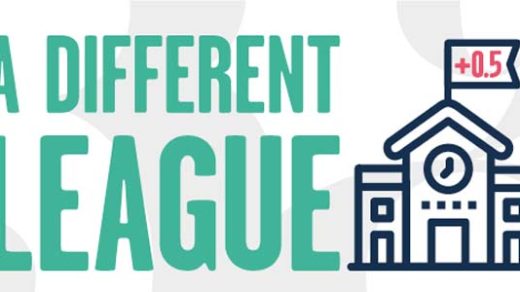Schools could lose over £1 billion in funding by 2030 due to falling pupil numbers, report reveals

Projected falls in pupil numbers could have a significant impact on school funding across England, according to a new report.
The Education Policy Institute’s analysis uses its new school funding model, which replicates the Department for Education’s own national funding formula (NFF), to analyse the impact of potential funding policy decisions on individual schools and areas of the country.
Key findings in the report included:
- Total pupil numbers in state-funded primary and secondary schools are projected to fall from a peak of 7.57 million in 2022-23, and then decrease at an average rate of 1.0 per cent each year until they reach 7.14 million in 2028-29.
- This means that even under a scenario where per-pupil funding is increased by 0.5 per cent per year, overall funding would still fall by £1 billion by 2029-2030. Total funding would peak in 2024-25 at £42.7 billion but would then decrease by a yearly average of 0.5 per cent until 2029-30, where it would fall to £41.6 billion – 2.6 per cent lower than its peak in 2024-25.
- All regions will experience a decrease in primary school funding between 2023-24 and 2029-30, with the North East projected the largest decrease of 9.0 per cent. The East of England is projected the smallest decrease with just a 1.2 per cent drop in funding.
- – In secondary schools, all regions with the exceptions of Yorkshire and the Humber, the North East, and London are projected to experience an increase in funding between 2023-24 and 2029-30. The East of England is projected the largest increase at 4.9 per cent.
In future work, EPI plans to investigate how funding could be weighted more heavily towards schools with greater numbers of disadvantaged pupils, to help tackle the widening attainments gaps that these pupils face.
Robbie Cruikshanks, Researcher at the Education Policy Institute (EPI), said: “Most school funding is allocated on a per-pupil basis. As a result, falling pupil numbers can mean lower budgets for schools whilst not lowering costs in the same way, given these are largely fixed.
“Managing this fall in pupil numbers means that, in many areas of the country, the number of pupils that are admitted to schools will inevitably fall. This could then lead to mergers to ensure that schools remain financially viable or even school closures. This could then lead to mergers to ensure that schools remain financially viable or even school closures.
One of the key challenges facing the system is that pupil place planning remains the responsibility of local authorities, but ultimately they have no statutory levers to direct academies to adjust admissions numbers.
“Policymakers must carefully consider the impacts of changes to the national funding formula on schools that are most affected by falling pupil numbers and how best to redistribute any savings created by these falls.”







